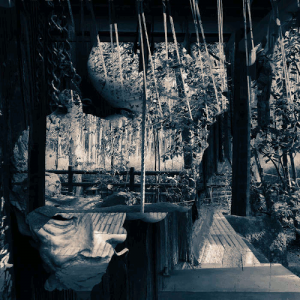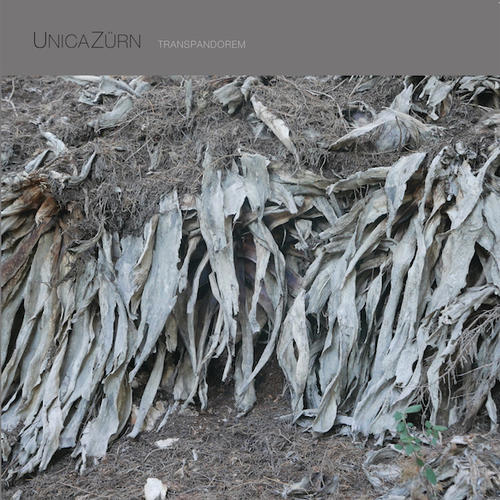 Italian sound sculptor and musician Andrea Laudante has been looking into the way that we perceive concrete and instrumental music, and how the two can interact in a natural way. As one part of Degoya, he has already been involved in an album release this year, but this series of ten tracks on Banat Banat Ban Jai acts as a personal journey of sorts that we can appreciate and with which we can become entwined in whichever way that it affects us.
Italian sound sculptor and musician Andrea Laudante has been looking into the way that we perceive concrete and instrumental music, and how the two can interact in a natural way. As one part of Degoya, he has already been involved in an album release this year, but this series of ten tracks on Banat Banat Ban Jai acts as a personal journey of sorts that we can appreciate and with which we can become entwined in whichever way that it affects us.
The pieces are held together by delicate piano that drifts, listless and spare, among the background sounds with which most of us will be familiar; wind in the trees, the erratic lull of birdsong, the trudge of tired feet. This half-dreamt movement through hazy landscapes is familiar yet out of context, as if we are used to hearing these sounds but in a different order or with other variations. The stirring of the piano is like a breeze as the creak of wood and the sounds of open fields gently drift down.
The sounds used are not always comfortable. The clanks and hollow noises of “So Many Rhodes” are awkward and feel less about movement, and more about being stuck in one place, hopefully temporarily — but not for sure. It is frustrated and confused and almost insular. There is a sense of containment here that is at odds with other pieces, but is necessary for the different perspectives on offer here. In general there is tranquillity and this is clearly a labour of love. I have spent many contented days walking amongst windswept and lonely landscapes, and the pieces presented on Banat Banat Ban Jai do a great job of conjuring up that sense of being at one with nature. Tranquility and solitude is what is on offer here; yet the deeper you listen to the spaces in between the lingering elements, the more drawn into it you are. In places, the piano evokes the soft drop of spring rain, but added electronics cause some confusion, although the soft rush of surf once again draws you again towards nature. The juxtaposition of sounds is well chosen and when you can hear what seems to be the buzz of an amplifier, you end up searching beyond it for its natural pairing. The clash and clang of strings brings to mind being stuck I an ancient corrugated iron barn, awaiting the melee outside to subside. The random bashes and scrapes as the wind rocks the structure send things in a slightly darker direction. The sense of peace has fled briefly and the air is a little malevolent, almost portentous. In the doomier sections you are always brought back by the sounds of nature. This constant backdrop of familiarity prevents the album from disappearing down a rabbit-hole of angst and keeps it on the footpath towards a safe haven.The sound of radio pips appearing to form a slow shot of electronic scurf sonically describes this album in a nutshell. The constant companion of the familiar, be it birdsong or lapping water or the drone of wind, is heartening with its gentle reminder of what we have outside of our windows, interspersed with the less recognisable elements. I tried to guess some of them, but was left wanting. The placid early morning piano of “Pratah Smarami” drifts across the frosty landscape like puffs of frosty breath and then leads into the ghost station lament of “From Benares To Yeraven”; the spectres of steam engines idling by abandoned platforms, sombre and melancholy as the snap of twigs on rusted rails evokes half-seen memories and hidden lives.
This album drifts through our lives like an unexpected but welcome reminder of what the natural world has to offer us. This is then intertwined with the thoughtful and well-considered concrete elements and musical parallels that offer a series of refreshing and delicate vignettes.-Mr Olivetti-



